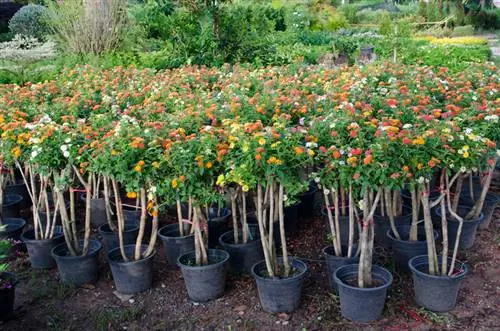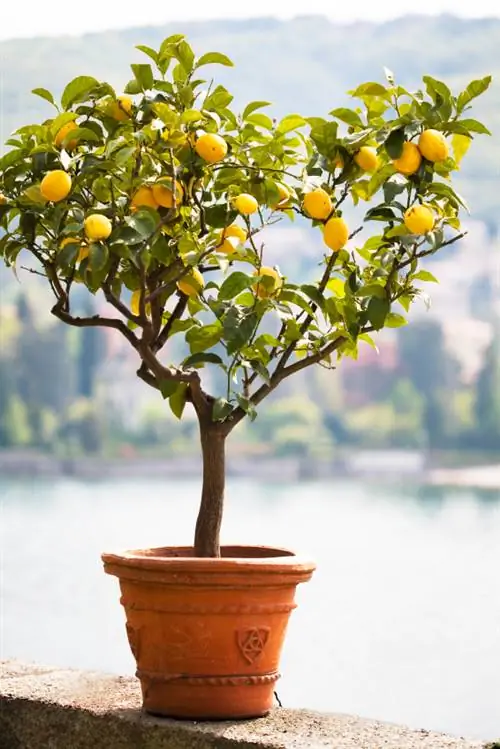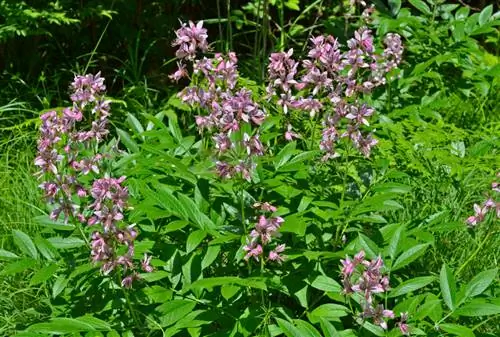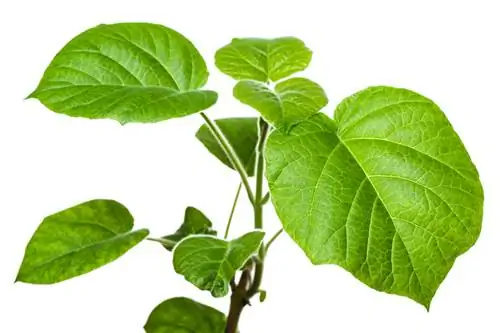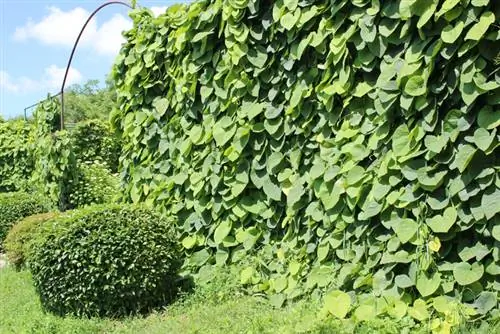- Author admin [email protected].
- Public 2023-12-16 16:46.
- Last modified 2025-01-23 11:20.
The lantana is one of the robust balcony plants. As with all plants, the correct planting and the perfect location make a significant contribution to plant he alth. We have summarized what you need to consider here in a compact form.
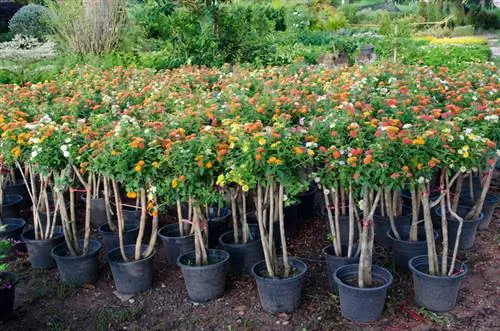
How do I plant a lantana correctly?
For the lantana, choose a small pot with loose, nutrient-rich soil for flowering plants. Place the plant in a bright, sunny location where it will receive at least three hours of sunlight daily. It should be repotted when the roots grow out of the drainage hole.
When does it need to be repotted?
Unlike other plants, the lantana is not repotted at a specific time of year. A new plant container is always necessary when the roots of the small shrub grow out of the water drainage hole in the flower pot. Generally keep the pot size small and then give the lantana a container that is one or two sizes larger. If the pot is too big, the lantana initially forms a lot of roots and leaves. The desired abundance of flowers decreases.
The preferred substrate
The lantana thrives best in loose, nutrient-rich soil for flowering plants. Alternatively, you can use topsoil to which you add some compost and sand.
The perfect location
The lantana needs a bright, sunny place. It should be exposed to the sun for at least three hours a day in order to produce many flowers.
Flowering time
The flowers begin to open as early as June. If the plant is cleaned regularly and everything that has faded is removed, the lantana will produce new flowers well into October.
Advancing and propagating
The lantana can be propagated in spring by cuttings:
- Cut cuttings and remove the lower leaves.
- Dip the interface in rooting powder (€9.00 at Amazon) and place it in a mixture of peat and sand or special potting soil.
- Wet well but do not soak completely.
- Put a hood or a plastic bag over the cultivation container and place it in a bright place.
The cuttings have already formed roots after just two to three weeks. It is now important to trim the shoots to encourage the lantana to grow bushy. You can also raise the offspring as standard stems.
Tip
Radiantes are poisonous and can cause skin irritation just by touching them. Therefore, wear gloves during all care procedures.

